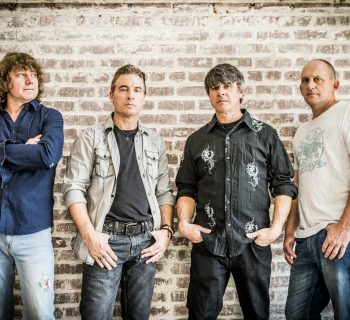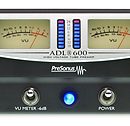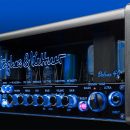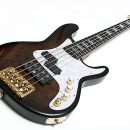Taking corrective action can go a long way toward
personal and professional fulfillment.
In 2019, Steve Lukather had had enough. The renowned, award-winning guitarist and longest-serving member of the rock band Toto finally got himself fitted for hearing aids. This year, with his Widex hearing aids discretely in place, Lukather mixed his newest solo album, due out in February 2021.
“It’s really been life-changing,” he says now. “My ears are so important. Suddenly I’m hearing sounds I haven’t heard in 25 years.”
Lukather freely admits what many musicians know: that constant exposure to high decibel levels — whether on stage or wearing headphones in the studio — took its toll on his hearing. He also admits doing nothing about it until his family began complaining about his habit of turning the TV on full volume.
“I was working so much, I never had time to really deal with it,” Lukather says. “My brain adjusted to the deficit the best it could.” Although he was used to wearing in-ear monitors when he performed, he says he resisted hearing aids for years because he associated them with the large, bulky models he’d seen in the past — older devices designed primarily to amplify sound, not improve the hearing experience.
Lukather says he knows many musicians suffering from noise-induced hearing loss. After being exposed to loud noise levels over a period of time, hair cells in the ear, which are a person’s sound wave receptors, begin to wilt and can’t spring back. The fact is, the National Institutes of Health estimates 26 million U.S. adults have suffered permanent damage to their hearing from excessive exposure to noise , and studies indicate professional musicians are nearly four times as likely to develop noise-induced hearing loss as the general public.
Regardless of outcome, it’s important for musicians to recognize the signs of noise-induced hearing loss and take quick action, whether that includes ear protection, hearing aids, or both. If you perceive any of these signs that you’re experiencing hearing loss, consider making an appointment with an audiologist:
1. The onset of tinnitus. That ringing in your ears after a performance isn’t hearing loss, but it could be an early indicator of things to come. Musicians are 57 percent more likely to develop tinnitus than other people. Many rock musicians, for instance, develop tinnitus from playing loudly long before they realize they’ve lost hearing in one or both ears. (Lukather first got tinnitus in 1986.) The high likelihood among musicians of developing tinnitus should be an opportunity to seek the counsel of an audiologist, many of whom specialize in treating musicians. They may recommend you wear hearing protection or in-ear monitors. Many musicians who wear ear protection when they perform say the experience makes it easier to get used to wearing hearing aids, should the need arise.
2. Loud noises begin to cause discomfort. Noise-induced hearing loss from prolonged exposure to loud music can eventually lead to discomfort or pain. In some cases, you could suffer an ailment called hyperacusis, which is characterized by abnormal sensitivity to sounds that others may not find overly loud, such as the jangling of keys or a car engine. If any noise causes discomfort, it’s best to get it checked out right away.
3. Developing a “blind side” in your hearing. Some musicians begin to lose hearing in only one ear. For a violinist in an orchestra, for example, it’s often the ear directly above the instrument they play. Or a flutist, who can develop hearing loss on the side they hold their flute. In either case, they can develop hearing loss in the ear that receives the most direct exposure to sound. In fact, orchestra musicians can develop a “blind side” for other directional factors, such as being seated in a section where they receive direct sound from the horns in one ear (or, doubly hazardous, in both ears). To combat this effect, some orchestras furnish certain musicians with neck shields to reduce noise exposure from louder instruments. Whatever the case, because the hearing loss is asymmetric, such musicians may not immediately notice, or they may choose to delay action. Either could have lasting effect.
4. Fellow musicians observe you playing off-key. Not surprisingly, when you develop hearing loss, you can’t always make out the full range of sound in a performance, especially in the high frequencies. As a result, you may find yourself playing off-key. In-ear monitors can help, and hearing protection exists with special filters that protect your ears from excessive noise while allowing you to hear the full frequency range. And today’s most advanced hearing aids have been designed to improve clarity and sound quality — not just amplification — so more musicians with hearing loss wear them in the studio and elsewhere.
5. General fatigue, social isolation, or trouble concentrating. Some symptoms of hearing loss are common among musicians and non-musicians, though musicians may experience them more acutely. Hearing loss forces your cognitive facilities to work harder to make out speech, everyday sounds, and — in your case — the many nuances of a musical score. Studies have begun to show that because of this, hearing loss causes fatigue. For many, this fatigue can make it difficult to concentrate or follow conversations, which in some cases causes the sufferer to withdraw from others.

Ultimately, paying attention to the signs of hearing loss can have a profound effect on the lives of musicians. Steve Lukather compared his tipping point to a boxer taking one too many punches, and his embrace of Widex hearing aids to letting him “be a human being again.” Musicians, by the nature of their work, are at heightened risk of hearing loss. Knowing how to recognize it and taking quick action are the keys to success — and lasting happiness.
For more information about Widex, click here.


















